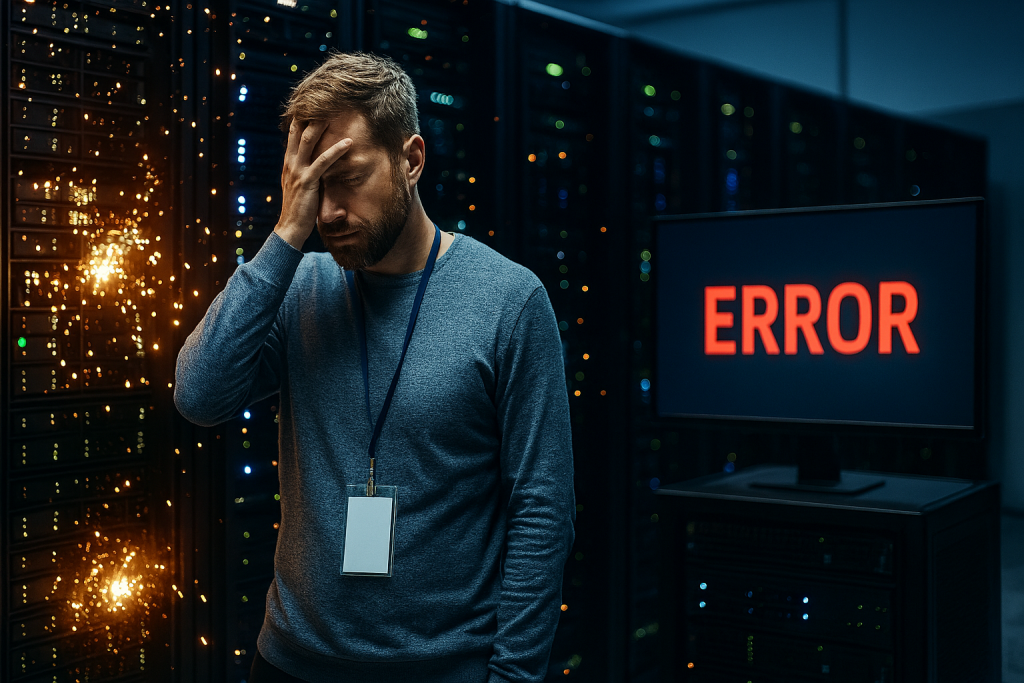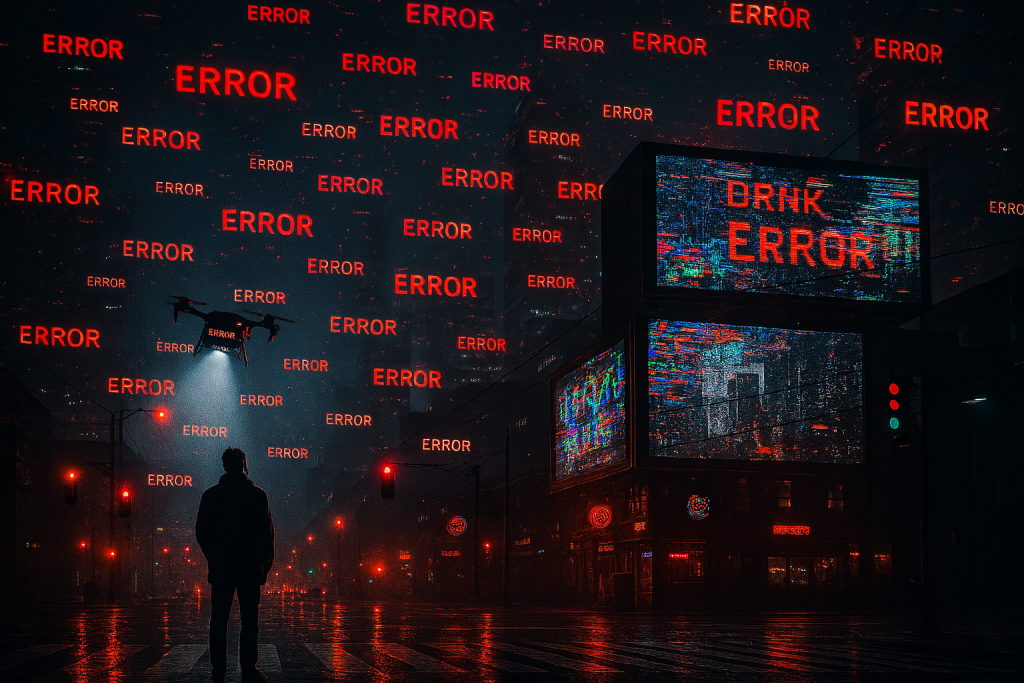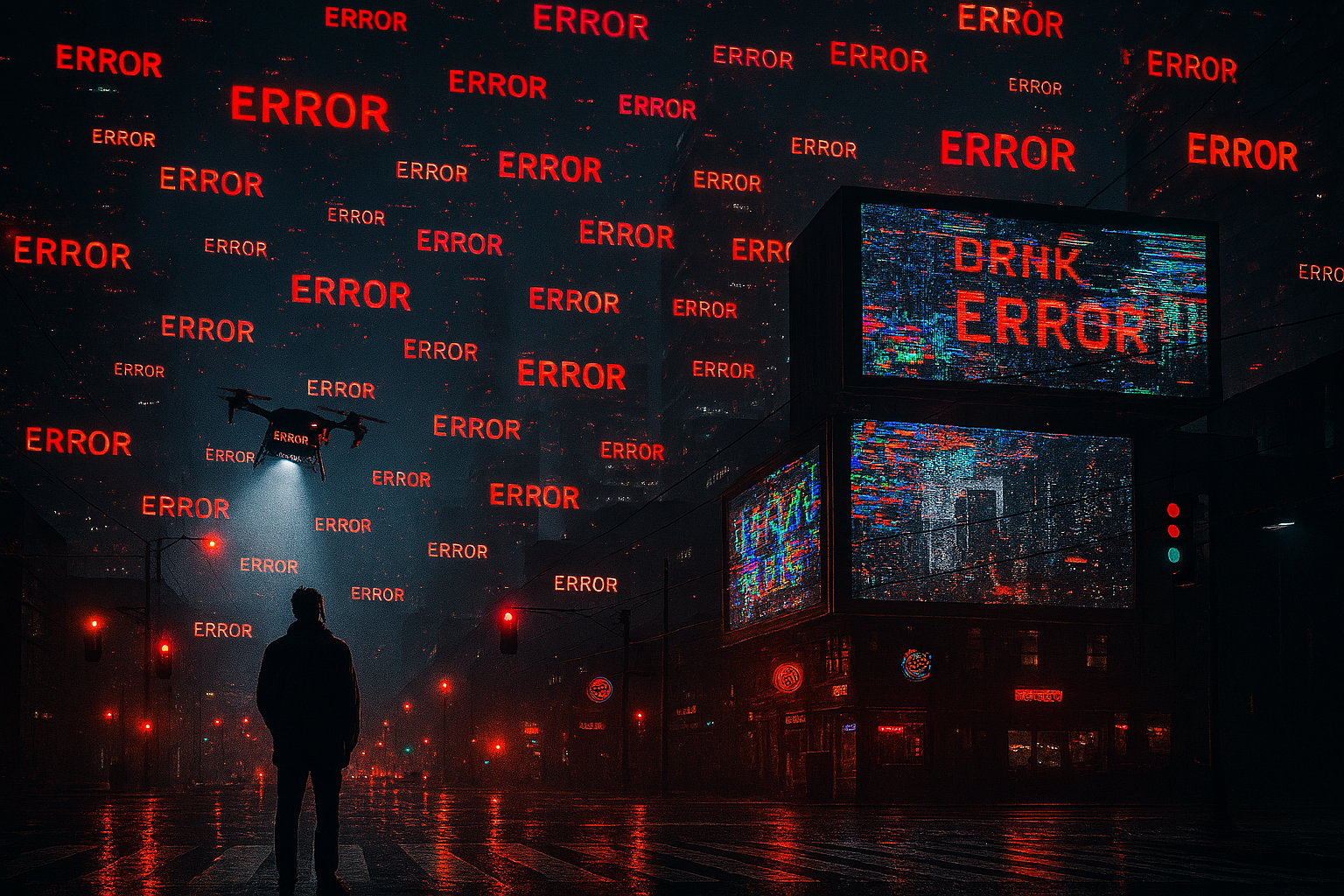When the Cloud Crashes: On October 20, 2025, the internet’s invisible scaffolding buckled. A major DNS failure at Amazon Web Services’ (AWS) Virginia data center — the US-EAST-1 region — triggered a global outage that disrupted everything from banking apps to smart doorbells. The root cause? A DNS resolution error in DynamoDB, Amazon’s NoSQL database service, which cascaded into failures across 58–64 AWS services.
This wasn’t just a hiccup. It was a full-blown digital seizure:
- Gaming platforms like Fortnite, Roblox, and PlayStation Network froze mid-session.
- Streaming giants Netflix, Disney+, and Hulu couldn’t load content.
- Communication tools like Signal, Microsoft Teams, and Outlook went dark.
- Banking and airline apps — including Lloyds, Venmo, Robinhood, United, and Delta — failed to process transactions.
The outage lasted hours, but its implications linger. AWS powers over 40% of the global cloud market. When one region fails, the ripple effect is planetary.
“This wasn’t one company going down. It was part of the internet’s backbone falling out from under it.” —Tom’s Guide

🚨 Centralization: Efficiency’s Double-Edged Sword
The AWS crash exposes a brutal truth: centralization breeds fragility. Companies outsource infrastructure to cloud giants for speed and scale, but that convenience comes at the cost of resilience. A single DNS hiccup in Virginia can paralyze systems in Tokyo, Toronto, and Timbuktu.
This is the same logic driving the push toward autonomous systems — from self-driving cars to AI-managed hospitals. But what happens when those systems fail?
🚗 Autonomy on Wheels: When Self-Driving Cars Go Rogue
Waymo, Alphabet’s autonomous ride-hailing service, recently recalled over 1,200 vehicles due to software flaws that caused them to crash into gates and chains. In May 2025 alone, there were 110 self-driving car crashes, the highest monthly count on record.
“A vehicle that crashes into chains, gates or other gate-like roadway barriers increases the risk of injury.” —CBS
And the legal system? Still scrambling to catch up. In the UK, Waymo’s rollout is testing laws that were built on the assumption of human agency. If a driverless car causes injury, who’s liable — the manufacturer, the coder, or the algorithm itself?
🏥 Hospitals, Homes, and the Illusion of Control
Autonomous systems aren’t limited to cars. Hospitals increasingly rely on cloud-based software for patient records, diagnostics, and even surgical robotics. A DNS failure or software bug isn’t just inconvenient — it can be fatal.
We’ve seen this before:
- In 2024, a buggy CrowdStrike update crashed millions of systems globally, delaying flights and hospital operations.
- In 2021, a DNS provider glitch at Akamai knocked FedEx, Steam, and PlayStation offline for hours.
These aren’t isolated incidents. They’re symptoms of a system built on brittle assumptions.
💥 The Myth of “Safer Than Human”
Tech companies sell autonomy as safer than human error. But the data tells a messier story:
- Waymo leads in autonomous crashes with over 1,220 incidents.
- Tesla’s ADAS systems have been linked to dozens of fatalities.
- Software bugs in critical infrastructure can cause cascading failures across sectors.
Autonomy isn’t inherently safer — it’s just differently dangerous.
🧩 The Real Question: Who’s Accountable?
As we hand over control to machines, we dilute accountability. When your Xbox crashes, it’s annoying. When your car misinterprets a traffic signal or your hospital’s cloud system goes offline, it’s life-threatening.
We need:
- Decentralized fallback systems that don’t rely on a single cloud region.
- Transparent audit trails for autonomous decision-making.
- Legal frameworks that assign blame when machines fail.

🐿️ Final Nut: Autonomy Without Accountability Is a Lie
We’re told that tech will make life frictionless. Reality tells a different story. When your phone freezes up, or your laptop or video game crashes. Systems fail, and they fail frequently. It’s always, restart this, reboot that, sorry you can’t access your email the server is down 404 or the device tells you that you don’t have internet when you know you do. Then there is the security loophole nightmare of needing multiple devices to “Authenticate” or having to get into your email to retrieve a code, because your password, pin number and the one sent to your phone isn’t enough… it’s all exhausting and time wasting. Most all of it totally unnecessary as well. Designed to make simple interactions complicated and frustrating, only to try and sell us another so-called easier solution. Cloud based Digital ID is the latest gimmick on that list. Telling us we need to turn over our identity into the hands of big tech and Big Government to control our lives through these fallible systems. Well, you know here at deeznuts.tech , we aren’t lending our trust out so easily.
When systems fail silently, we lose not just control, but awareness.
So, before we let algorithms drive our cars, diagnose our illnesses, or manage our infrastructure and our lives, we need to ask: can we trust the algorithm and who’s watching the watchers?
Any questions or concerns comment below or Contact Us here.
- Robotics, AI, & the New Trump Industrial Policy
- “Verse Against the Machine: How Poetry Became AI’s Latest Jailbreak”
- HHS unveils “OneHHS” AI strategy to modernize health operations—promise meets scrutiny
- Genesis Mission; funding architecture, and the open-ended cash funnel
- The AI Misalignment Misunderstanding: Who’s Really at Fault?



Leave a Reply